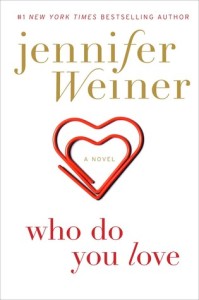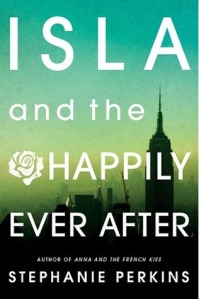
Eh, so I don’t get out much. And I definitely don’t get to the movies often. But something about the previews for “Five Feet Apart” inspired me to request babysitting for two squirrelly toddlers and arrange a date night for us to get out on a Friday night to see this film.
It’s been a week, and I just keep thinking about it.
On the surface, at least, “Five Feet Apart” looks like another riff on “The Fault In Our Stars,” which I liked but don’t remember loving. (At least, I think that’s the case? Straight-up had to re-read my review, because that was 2014, friends. The ol’ brain ain’t the same post-kids.)
Given I’m prone to anxiety on a normal day, I definitely don’t need to throw existential characters with life-threatening diseases into the mix. But this movie — focused on Stella (Haley Lu Richardson) and Will (Cole Sprouse), teens who meet in the hospital as they grapple with complications of cystic fibrosis — was not depressing. I mean, it certainly had its heart-tugging moments . . . and I was ugly-sniffling, for sure.
But after the lights came up, I was only a mini-disaster. I looked at my husband and thought, I’m a human. I’m alive. I have time.
What am I doing with it?

In many ways, “Five Feet Apart” is about restraint. Will shouldn’t fall in love with Stella, but he does. Stella wants to let herself fall back, but it isn’t that simple. Their illness requires the pair to stay physically apart, lest they risk life-threatening cross infection.
Six feet (later: five feet, per Stella’s request). No holding hands. No hugging. No kissing. Absolutely no intimacy.
Think about it: two 17-year-olds who are all mixed up under that crazy, amazing, whacky first-love spell . . . and they cannot touch. Stella and Will’s relationship is carried out from a safe, respectable distance or through the modern marvels of FaceTime, though their hospital rooms are just a few doors apart.

There is electricity in the waiting. In the wondering. In the hoping-against-hope — though as an audience, we know this cannot happen. They don’t have the luxury of indulging their feelings. There is no sharp exhale of relief when their lips finally meet. Loose ends cannot be tied.
But man, I wanted them to tie.
Our on-demand, two-day-free-Prime-shipping lifestyles today don’t lend themselves to the restraint and sacrifice required of Will and Stella. That’s what stood out to me: we’re all told to go for what we want and make it happen!, but sometimes we can only be brave in the face of hard choices.
“Five Feet Apart” isn’t perfect; few movies are. The ending felt rushed and over-the-top after such a steady, sweet progression. But that ruined nothing. Sprouse does dark and broody so well, and his character is jaded and vulnerable with an innate goodness that hurts. Richardson’s Stella is nuanced, realistic, sweet and strong. I loved the two together. And I loved this movie.
The film has sparked conversation and controversy in and out of the cystic fibrosis community, and it’s not for me to weigh in. But I will say that I left the theater with a better, if imperfect understanding of a disease I’d known very little about (even working in healthcare marketing, where we pride ourselves on amassing medical knowledge). More than 30,000 Americans have CF, and funding is needed for ongoing research to find a cure.
The moral of the story is one we’ve heard a hundred, maybe a thousand times: life is short. Reach out. Take a chance. Be bold. Tell me, what is it you plan to do with your one wild and precious life?
But “Five Feet Apart” stood apart for me because of the ache in my chest and feel-feel-feelings it stirred up, both while watching and thinking about it again. And again. And again. I often reached over to press my fingers into my husband’s arm, the two of us trading glances that said wow this is good and so sad and man I love you.
It’s haunting. It broke my heart . . . and healed it, too.
Can’t ask too much more of date night.
 Rachel Blum is an 8-year-old heart patient when she first meets Andy Landis at a Florida hospital. Andy arrives alone with a broken arm, capturing Rachel’s attention in the emergency room. She’s searching for a good story to tell an ill friend up on their regular floor, and she finds that — and more — in Andy.
Rachel Blum is an 8-year-old heart patient when she first meets Andy Landis at a Florida hospital. Andy arrives alone with a broken arm, capturing Rachel’s attention in the emergency room. She’s searching for a good story to tell an ill friend up on their regular floor, and she finds that — and more — in Andy. Here’s what I love about Stephanie Perkins: her stories are romantic and realistic, adorable and heartbreaking. There is just the right amount of salt to balance the sweet — and though her characters do get a “happily ever after” (imagine that!), the road isn’t paved solely in diamonds. You have to stumble on a few ruts, too.
Here’s what I love about Stephanie Perkins: her stories are romantic and realistic, adorable and heartbreaking. There is just the right amount of salt to balance the sweet — and though her characters do get a “happily ever after” (imagine that!), the road isn’t paved solely in diamonds. You have to stumble on a few ruts, too. So I finished John Green’s The Fault In Our Stars on Sunday. I bought it last week in anticipation of a long weekend away as a “treat” to myself, insofar as a book about kids with cancer can be a “treat.”
So I finished John Green’s The Fault In Our Stars on Sunday. I bought it last week in anticipation of a long weekend away as a “treat” to myself, insofar as a book about kids with cancer can be a “treat.” When her best friend announces she’s leaving to volunteer as a nurse in the heart of World War II, Anne Calloway doesn’t hesitate to join her. No matter that Anne is young and nearing her own wedding to a caring if bland sort of man. Seattle will always be home, Anne knows, but the opportunity to join Kitty in Bora-Bora is too exciting to forgo. Plus, everyone is joining up to serve our country — and shouldn’t she try to help the boys out there on the frontlines?
When her best friend announces she’s leaving to volunteer as a nurse in the heart of World War II, Anne Calloway doesn’t hesitate to join her. No matter that Anne is young and nearing her own wedding to a caring if bland sort of man. Seattle will always be home, Anne knows, but the opportunity to join Kitty in Bora-Bora is too exciting to forgo. Plus, everyone is joining up to serve our country — and shouldn’t she try to help the boys out there on the frontlines? In her hometown of San Francisco, 17-year-old Delores “Lola” Nolan is used to standing out — and she prefers it that way. Between her multicolored wigs, outlandish dress and brilliant makeup, Lola attracts attention everywhere she goes. One such admirer is Max, her 22-year-old boyfriend . . . and Lola’s parents are none too happy about it.
In her hometown of San Francisco, 17-year-old Delores “Lola” Nolan is used to standing out — and she prefers it that way. Between her multicolored wigs, outlandish dress and brilliant makeup, Lola attracts attention everywhere she goes. One such admirer is Max, her 22-year-old boyfriend . . . and Lola’s parents are none too happy about it. Kimberly Chang is just 11 years old when she journeys from Hong Kong to New York City with her mother, a tired single parent. Knowing little English and finding themselves completely at the mercy of Ma’s older sister, Aunt Paula, Kim and Ma are sequestered in a rat- and roach-infested apartment in a part of the city that is all but abandoned, and the pair are “graciously” given jobs at the sweatshop Aunt Paula manages.
Kimberly Chang is just 11 years old when she journeys from Hong Kong to New York City with her mother, a tired single parent. Knowing little English and finding themselves completely at the mercy of Ma’s older sister, Aunt Paula, Kim and Ma are sequestered in a rat- and roach-infested apartment in a part of the city that is all but abandoned, and the pair are “graciously” given jobs at the sweatshop Aunt Paula manages.